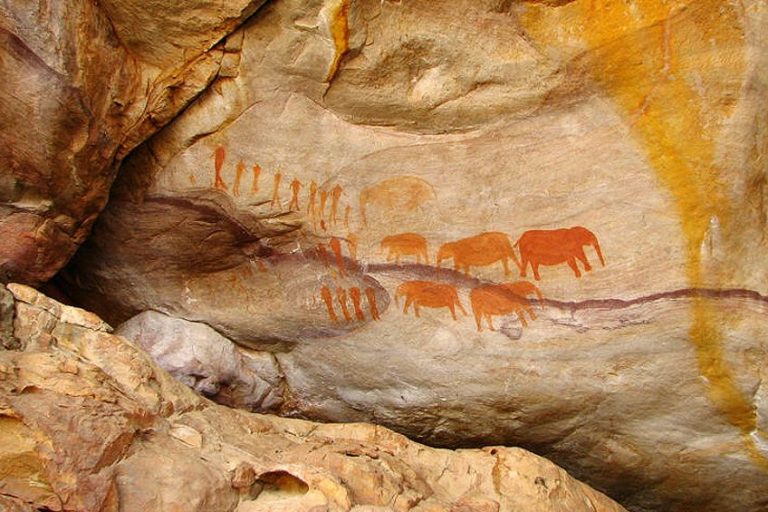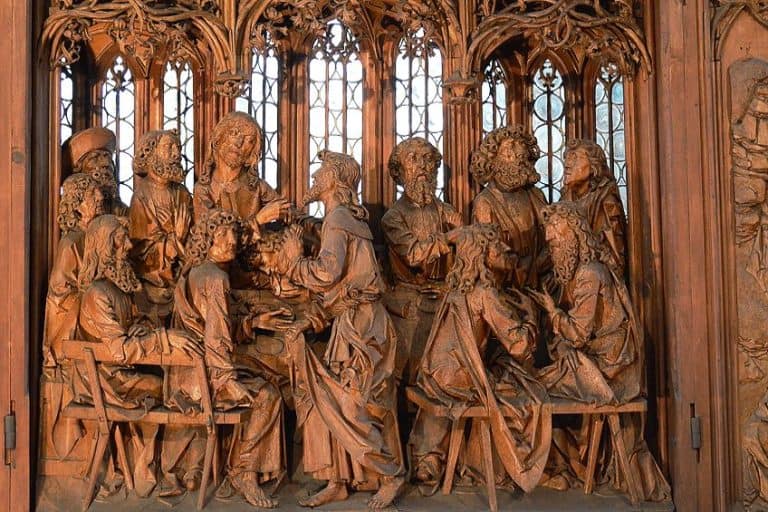Generative Art – Discover Where Code Meets Creativity
In the realm of contemporary artistic expression, a captivating and transformative movement has emerged, captivating the imaginations of creators and spectators alike: generative art. At its essence, generative art poses the question: what is generative art? This innovative form of artistic endeavor transcends traditional paradigms, introducing a dynamic interplay between the ingenuity of generative artists and the computational prowess of algorithms. In this exploration, we delve into the fascinating world of generative art, shedding light on the unique processes that unfold when the creative vision of a generative artist converges with the intricate algorithms that breathe life into their creations.
What Is Generative Art?
Generative art stands at the intersection of technology and creativity, offering a fascinating glimpse into the evolving landscape of artistic expression. In essence, generative art refers to the creation of visual, auditory, or interactive artworks through the use of algorithms, computer code, and systematic processes. Unlike traditional forms of art where the artist’s hand plays a central role, generative art introduces the concept of computational creativity, where machines actively contribute to the creative process.

At its core, generative art relies on algorithms to generate unique and often unpredictable outcomes. These algorithms can take various forms, ranging from simple mathematical equations to complex artificial intelligence systems. The artist defines a set of rules or parameters, and the algorithm interprets and transforms these rules into a visual or auditory composition. The result is a dynamic interplay between the artist’s intentions and the inherent randomness or complexity embedded within the algorithm.
Key Components of Generative Art: Decoding the Algorithmic Essence
Generative art, a fascinating realm where code and creativity converge, hinges on key components that give life to its unique and often unpredictable outcomes. At the heart of this innovative form of artistic expression lies the entangled dance of algorithms, serving as the fundamental building blocks that shape artistic ideas.
Let’s delve deeper into the key components that make generative art a dynamic and ever-evolving landscape.
Algorithms: The Artistic Architects
Algorithms serve as the cornerstone of generative art, acting as the artistic architects that bring concepts to life. These are sets of rules or procedures that define the creation process, acting as the guiding principles that the artist embeds within the digital canvas. The beauty of algorithms lies in their versatility, adapting to the artist’s intent while introducing an element of systematic order.
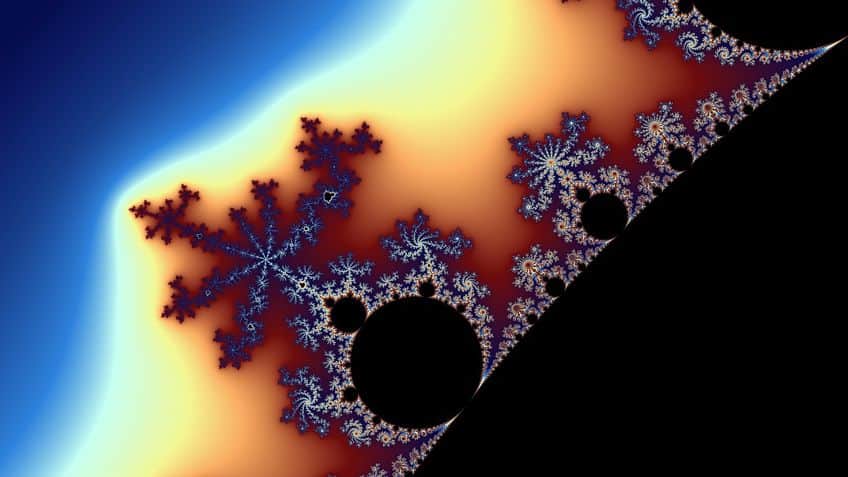
Deterministic Algorithms: Precision in Creation
Within the realm of generative art, algorithms can take on the characteristics of determinism, adhering strictly to a fixed set of rules. In this scenario, each iteration of the algorithm produces predictable and reproducible results. Deterministic algorithms offer precision and control to the artist, allowing for the creation of intricate patterns and designs with a sense of order and regularity.
Stochastic Algorithms: Embracing the Unpredictable
On the flip side, generative art often embraces stochastic algorithms, injecting an element of randomness into the creative process. Stochastic algorithms introduce a degree of unpredictability, allowing for the emergence of unexpected patterns and variations in each iteration.
This element of chance adds a layer of complexity to generative art, fostering a dynamic interplay between order and chaos.
Dynamic Interplay: Guiding the Creative Symphony
The utilization of both deterministic and stochastic algorithms in generative art results in a dynamic interplay that characterizes the creative symphony. Artists define the rules and parameters, setting the stage for the algorithm to interpret and transform these directives into visual or auditory compositions. This dynamic interaction between the artist’s intentions and the inherent qualities of the algorithm creates a rich and layered artistic experience.
Parameters and Rules: Shaping the Artistic Landscape
Within the algorithmic framework, generative artists wield the power of defining parameters and rules. These parameters encompass variables such as color palettes, shapes, sizes, and movements, offering a vast spectrum of artistic possibilities. The artist’s skill lies in striking a balance between the specificity of rules and the generative potential of the algorithm, steering the creative process in alignment with their artistic vision.
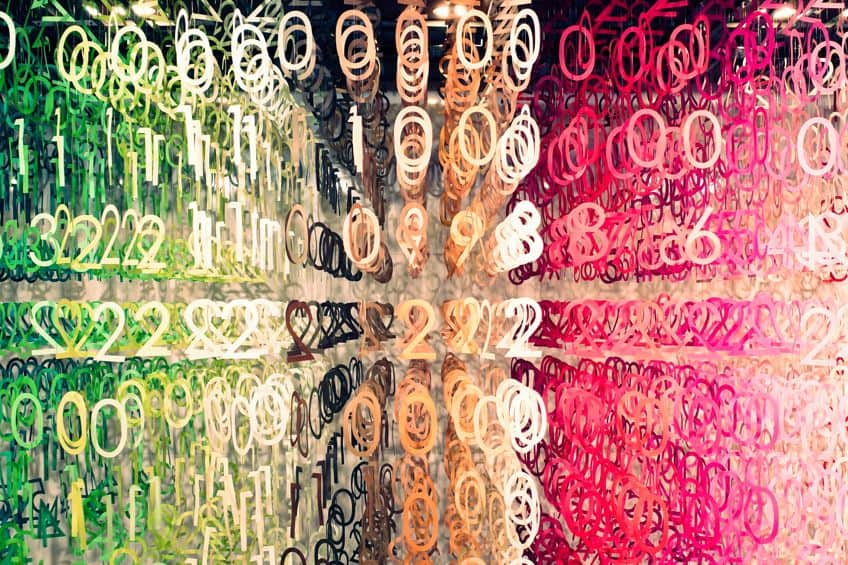
Code: The Digital Tapestry of Generative Art
In the field of generative art, code emerges as the digital brushstroke, the invisible hand that breathes life into the algorithms shaping captivating visual and auditory compositions. The significance of code in this innovative art form cannot be overstated, as it serves as the conduit through which the artist’s vision is translated into a language comprehensible to the machine.
Let’s unravel the intricate role of code in the generative art process and explore how it acts as the digital blueprint guiding the creation of these dynamic masterpieces.
Writing the Language of Creativity
Generative artists embark on a digital odyssey, wielding programming languages as their medium of expression. Python, JavaScript, and Processing are among the myriad languages chosen to encapsulate the artist’s creative vision in lines of code. Each programming language offers its own unique syntax and capabilities, providing generative artists with a versatile toolkit to articulate their artistic intent.
The Code As Blueprint
Code in generative art serves as more than mere instructions; it acts as the blueprint, the intricate roadmap guiding the computer through the intricacies of the algorithm. Within this digital manuscript, the generative artist encodes the rules, parameters, and logic that define the artwork’s form and behavior. Through the deft manipulation of variables and functions, the artist shapes the underlying structure that will birth the final composition.
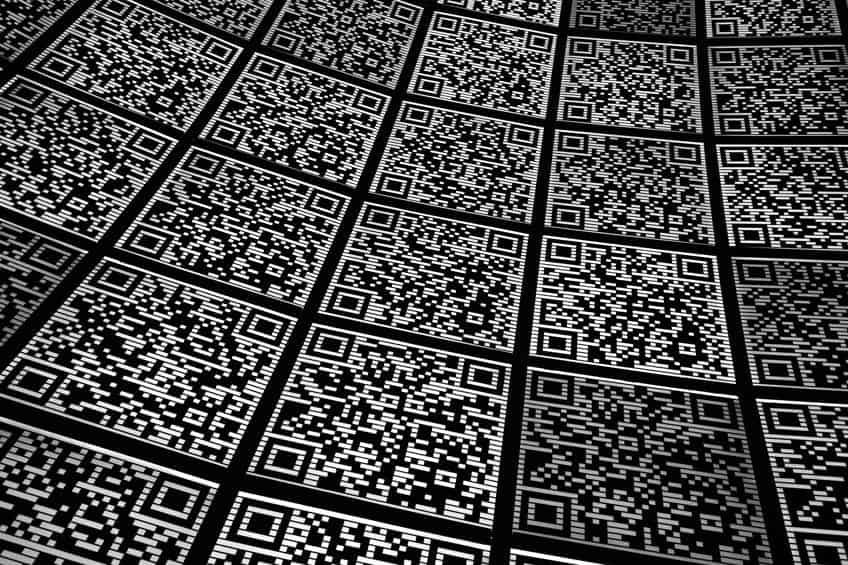
Iterative Refinement
Code in generative art is not static; rather, it is a living entity that undergoes iterative refinement. Artists often engage in a process of trial and error, tweaking the code, adjusting parameters, and observing the resulting transformations. This iterative approach allows generative artists to fine-tune their creations, exploring the vast landscape of possibilities hidden within the code.
Instructing the Machine
Once the code is crafted, it becomes a set of instructions that instruct the computer on how to interpret and execute the algorithm. The machine, devoid of creative intuition but armed with computational precision, obediently follows the directions encoded in the lines of code.
It is through this symbiotic relationship between artist and machine that the algorithmic vision is translated into a tangible, visual, or auditory reality.
Bridging Art and Technology
The use of code in generative art exemplifies the seamless fusion of art and technology. As artists harness the power of algorithms through code, they become both creators and technologists, navigating the delicate balance between the expressive and the computational. This synthesis of disciplines is at the core of generative art, challenging traditional notions of artistic creation and pushing the boundaries of what is achievable.
Parameters, Rules, and Interactive Elements: Shaping the Interactive Canvas of Generative Art
When it comes to generative art the creative process extends beyond traditional mediums as artists delve into the intricacies of defining parameters, rules, and interactive elements. These components form the dynamic palette from which generative artists draw, sculpting an evolving and participatory canvas that challenges the conventional boundaries of artistic creation.

Interactive Elements: Engaging the Audience
Generative art transcends the conventional boundaries of artistic observation by incorporating interactive elements that respond to user input or external stimuli. In this interactive realm, the audience becomes an active participant, wielding influence over the unfolding artwork. Whether through physical gestures, sound, or other forms of input, the generative art responds in real-time, creating a unique and participatory experience for the observer.
Blurring the Lines: Creator and Observer
The incorporation of interactive elements in generative art blurs the lines between creator and observer, transforming the traditional roles within the artistic experience. As users engage with the artwork, they become co-creators, influencing the trajectory of the composition. This shift in dynamics elevates the interaction beyond passive observation, fostering a sense of collaboration and shared creativity.
The audience’s engagement transforms the generative art piece into a living entity, evolving in response to the collective input of those who interact with it.
Participatory Aesthetics: A New Dimension of Artistic Expression
Interactive generative art introduces a new dimension of participatory aesthetics, where the boundaries between the artwork and its audience become fluid. The experience is no longer confined to a static, predefined composition; instead, it evolves organically in response to the input it receives. This symbiotic relationship between the artwork and the audience challenges traditional notions of authorship and invites a reimagining of the artistic process as a collaborative endeavor.
Technological Alchemy: Transforming Interaction into Art
The integration of interactive elements in generative art represents a form of technological alchemy, transforming user interaction into a unique form of artistry. As generative artworks respond to external stimuli or user commands, they become dynamic expressions of the evolving relationship between humans and technology. This fusion of technology and creativity exemplifies the potential of generative art to push the boundaries of traditional artistic paradigms.

Examples of Generative Artists and Art: A Diverse Palette of Creativity
Generative art manifests in various forms, showcasing the versatility of algorithms in creating captivating and often unpredictable outcomes. Let’s explore examples of generative art across different genres, each demonstrating the unique possibilities within this innovative artistic realm.

Fractals: The Mandelbrot Set by Benoît B. Mandelbrot
| Date of Birth | 20 November 1924 |
| Date of Death | 14 October 2010 |
| Place of Birth | Warsaw, Poland |
| Nationality | French and American |
| Art Movement | Fractal art |
| Mediums Used | Mathematics and Generative art |
Renowned as a trailblazing mathematician, Benoît B. Mandelbrot has etched his name into the annals of both mathematical theory and artistic expression with his groundbreaking creation—The Mandelbrot Set. This classic example of generative art transcends the boundaries of traditional artistic mediums, diving into the mesmerizing realm of fractals.
Mandelbrot’s contribution to the world of mathematics and generative art is undeniably profound. The Mandelbrot Set itself is born from a deceptively simple mathematical formula, yet its implications are far-reaching. This formula, rooted in the principles of iteration and recursion, unleashes a cascade of complexity, giving birth to intricate and self-replicating geometric patterns.
The allure of The Mandelbrot Set lies in its ability to take observers on a visual journey into the depths of mathematical beauty.
As one explores the fractal, each level of zoom reveals a new landscape of shapes, each echoing the patterns of its parent structure. The recursive nature of the formula ensures that, no matter how deep one delves, The Mandelbrot Set unfolds an ever-expanding tapestry of complexity and elegance.
Mandelbrot’s work is not confined to the realms of mathematics alone; it has carved a niche as a captivating artistic medium. The Mandelbrot Set, with its intricate and infinitely detailed patterns, serves as a testament to the symbiosis between mathematics and art. Audiences worldwide have been captivated by the inherent beauty and complexity embedded in The Mandelbrot Set, as it challenges perceptions of what constitutes artistic expression.

Mandelbrot’s legacy extends beyond the creation of a mathematical curiosity; it opened the floodgates for the exploration of fractals in both mathematical theory and artistic endeavors. The Mandelbrot Set stands as an icon, inviting artists, mathematicians, and enthusiasts to partake in a visual odyssey through the self-replicating wonders of generative art. In this intricate dance between simplicity and complexity, Benoît B. Mandelbrot has left an indelible mark, shaping the landscape of generative art and inspiring a new wave of creative exploration at the intersection of mathematics and aesthetics.
Algorithmic Drawing: Art by Software
| Date of Birth | 1 May 1928 |
| Date of Death | 27 April 2016 |
| Place of Birth | London, England |
| Nationality | British |
| Art Movement | Algorithmic art and Generative art |
| Mediums Used | Digital media and Computer programs |
In the realm of algorithmic drawing, where the fusion of art and technology gives rise to a unique form of creative expression, Harold Cohen emerges as a pioneering figure. His groundbreaking AARON series stands as a testament to the transformative power of algorithms in the creation of digital artworks.
Harold Cohen, born in London in 1928, was not only an artist but also a computer scientist, pushing the boundaries of both disciplines through his innovative work. Cohen’s background in both art and technology laid the foundation for his exploration into the realm of algorithmic art.
One of Cohen’s most notable contributions to the world of algorithmic drawing is the creation of the AARON series.
In this series, Cohen employed a pioneering approach by programming a computer to generate drawings and paintings autonomously. The algorithms designed by Cohen dictated every aspect of the artistic process, from the choice of colors to the composition of each stroke, challenging traditional notions of authorship in the art world.
The algorithms embedded in the AARON series not only acted as the tools employed by the artist but, more profoundly, assumed the role of the artist itself. The software autonomously made decisions about line placement, color selection, and overall composition, producing digital artworks that echoed Cohen’s artistic sensibilities. This departure from traditional authorship raises questions about the nature of creativity and the collaborative dynamic between human intention and algorithmic execution.
Cohen’s AARON series goes beyond the mere application of algorithms as tools; it challenges the very notion of authorship in art. The collaborative relationship between the artist and the algorithm in this series prompts a reevaluation of the role each plays in the creative process. The computer, guided by Cohen’s algorithms, becomes an active participant in the act of artistic creation, blurring the lines between human intention and machine execution.
Through the AARON series, Harold Cohen demonstrated the creative potential inherent in code within the realm of visual arts. His work showcases that algorithms, when wielded by a visionary artist, can not only replicate but also extend and redefine traditional artistic practices. The AARON series remains an influential example of how technology, in the hands of an artist, can generate new dimensions of aesthetic exploration, challenging preconceived notions and opening doors to novel possibilities in the world of art.
Interactive Installations by Random International
| Artist Name | Random International (Founded by Florian Ortkrass, Hannes Koch, and Stuart Wood) |
| Date | First exhibited in 2012 |
| Medium | Generative algorithms and sensors |
| Dimensions (cm) | Variable |
| Current Location | Various locations worldwide |
The seamless integration of generative art and interactive installations is vividly exemplified in masterpieces such as Rain Room by Random International. Positioned prominently in galleries and public spaces, this installation transcends the conventional static nature of artworks. Instead, it engenders a dynamic, participatory encounter with its audience.
By ingeniously employing a combination of sensors and generative algorithms, Rain Room crafts an immersive experience where raindrops respond dynamically to the presence and movements of those within the space.
As participants navigate through the simulated rainfall, the generative algorithms orchestrate a mesmerizing interplay, causing the droplets to either pause or intensify based on the precise positions of the individuals. In this extraordinary symbiosis of art, technology, and human interaction, Rain Room redefines the traditional role of the observer.
It transforms the act of merely witnessing an artwork into a deeply participatory engagement, erasing the delineation between the artwork itself and the engaged audience. Rain Room stands as a paradigmatic example of how generative art can not only captivate aesthetically but also envelop the viewer in an immersive and interactive narrative, pushing the boundaries of artistic experience.
Challenges and Future Directions in Generative Art
Generative art, despite its transformative potential, grapples with certain challenges that arise from the delicate interplay between algorithms and human creativity. One central challenge lies in finding the equilibrium between the deterministic nature of algorithms and the inherent unpredictability of serendipity essential to artistic expression.
Striking the right balance is an ongoing exploration, as artists seek to harness the computational precision of algorithms while allowing room for the spontaneity that defines the artistic process.
Future Directions
Looking ahead, the future of generative art holds a wealth of exciting possibilities, driven by rapid advancements in technology. Artificial intelligence, machine learning, and augmented reality are poised to revolutionize the landscape, pushing the boundaries of what generative art can achieve.
Advancements in artificial intelligence (AI) present an intriguing prospect for generative art. The integration of more sophisticated AI algorithms can potentially enhance the autonomy and creative decision-making capabilities of generative systems. This evolution could result in artworks that not only respond to predetermined rules but adapt and evolve in response to dynamic external stimuli.

Machine learning, with its capacity to analyze vast datasets and recognize patterns, opens new avenues for generative art. Artists may harness machine learning algorithms to create works that not only reflect predefined parameters but also learn and evolve based on the data they encounter. This adaptive quality introduces a level of responsiveness and learning to generative art, contributing to a more sophisticated and nuanced form of creative expression.
Augmented reality (AR) offers an immersive dimension to generative art. By superimposing digital creations onto the physical world, artists can create interactive and dynamic art experiences that respond to the viewer’s environment. This fusion of the virtual and physical realms introduces a new layer of engagement, inviting audiences to interact with generative artworks in novel and captivating ways.
Philosophical Inquiries in Generative Art: Navigating the Intersection of Creativity and Code
Generative art is a transformative force, pushing the boundaries of traditional artistic expression. This captivating fusion of human creativity and computational precision raises profound philosophical questions that challenge our understanding of art, authorship, and the evolving relationship between humans and machines.

Intention and Unpredictability: The Dance of Intention and Algorithmic Serendipity
Generative artists navigate a delicate balance between intention and the inherent unpredictability of algorithms. How much control can artists exert over the outcomes of their creations? This philosophical inquiry delves into the nature of creative expression and how the synergy of human intent and algorithmic serendipity shapes the artistic process.
Authorship and Originality: Unraveling the Threads of Creativity
At the heart of generative art lies a philosophical quandary: who is the true author? Is it the human artist who crafts the algorithm, the machine executing the code, or a harmonious collaboration between both?
As generative artworks defy conventional notions of authorship, questions about originality and the essence of creative agency come to the forefront.
Creativity and AI: Redefining the Artistic Landscape
As artificial intelligence becomes an integral part of generative art, questions arise about the nature of creativity. Can AI truly be considered creative, and if so, how does it challenge established notions of human creativity? The intersection of technology and artistic expression prompts a reevaluation of the sources and authenticity of creative inspiration.
Ethics of Algorithms: Navigating the Moral Landscape of Generative Art
The integration of algorithms introduces ethical considerations into the artistic realm. Questions of accountability, bias, and unintended consequences prompt a philosophical exploration into the ethical dimensions of generative art. As machines become artistic collaborators, what ethical frameworks should guide the creation and consumption of algorithmically driven artworks?

Interactive Art and Participation: Redefining the Audience-Artist Dynamic
Generative art often invites audience participation, blurring the lines between creator and observer. This philosophical inquiry explores how interactivity transforms the traditional relationship between the artist, the artwork, and the audience. What role does audience participation play in shaping the aesthetic experience and meaning of generative art?
What is generative art? It is a question that beckoned us to explore the intricate interplay between the visions of generative artists and the computational ballet of algorithms. We discovered that in this artistic genre, the generative artist assumes the role of a code composer, orchestrating a symphony of creativity through programming languages like Python or JavaScript. The resulting artworks transcend traditional paradigms, becoming living entities shaped by the delicate dance between intention and algorithmic unpredictability. As we navigate this evolving frontier, generative art invites us to reconsider not only the boundaries of creativity but also the very essence of authorship in the age of collaborative creation. The canvases of generative art bear witness to the harmonious fusion of human ingenuity and machine precision, paving the way for an era where the brushstrokes of generative artists are written in code, and the boundaries of artistic imagination know no bounds.
Frequently Asked Questions
What Are Examples of Generative Artists and Their Art?
The video game industry has embraced generative algorithms for procedural content generation, ensuring dynamic and diverse gaming experiences. No Man’s Sky, developed by Hello Games, is an example of generative art that leverages generative algorithms to create an entire universe of planets, landscapes, and creatures. Each player’s journey through the game unfolds in a procedurally generated universe, offering a vast and unique exploration experience. The use of generative art in games like No Man’s Sky exemplifies the potential of algorithms to shape interactive and immersive digital worlds.
Can Generative Art Be Interactive?
Generative art has the inherent capacity to be interactive. One of the fascinating aspects of generative art is its adaptability to user input or external stimuli, transforming the artistic experience into a dynamic and participatory engagement. Through the incorporation of interactive elements, generative art installations, for instance, can respond dynamically to the presence or actions of the audience, creating a unique and evolving experience. This interactivity blurs the conventional lines between creator and observer, as users become active participants, influencing the trajectory of the artwork in real-time. Whether through responsive visual displays, interactive installations in public spaces, or digital platforms inviting user engagement, generative art proves itself to be not only visually captivating, but also a realm where the boundaries between art and audience become delightfully fluid.
What Is the Difference Between Generative Art and AI Art?
The distinction between generative art and AI art lies in their underlying processes and creative methodologies. Generative art relies on algorithms, where artists establish rules and parameters that guide the creation of visual or auditory compositions. These algorithms can be deterministic or stochastic, offering a blend of intention and unpredictability. On the other hand, AI art involves the direct engagement of artificial intelligence systems, where machine learning algorithms analyze data to create or mimic artistic content. While generative art often involves the artist defining rules and parameters, AI art emphasizes the machine’s ability to learn and generate content autonomously based on patterns identified in extensive datasets. Both forms of art showcase the synergy between human creativity and technological innovation, yet their fundamental approaches to creation distinguish generative art’s algorithmic guidance from AI art’s data-driven autonomy.
Nicolene Burger is a South African multi-media artist, working primarily in oil paint and performance art. She received her BA (Visual Arts) from Stellenbosch University in 2017. In 2018, Burger showed in Masan, South Korea as part of the Rhizome Artist Residency. She was selected to take part in the 2019 ICA Live Art Workshop, receiving training from art experts all around the world. In 2019 Burger opened her first solo exhibition of paintings titled, Painted Mantras, at GUS Gallery and facilitated a group collaboration project titled, Take Flight, selected to be part of Infecting the City Live Art Festival. At the moment, Nicolene is completing a practice-based master’s degree in Theatre and Performance at the University of Cape Town.
In 2020, Nicolene created a series of ZOOM performances with Lumkile Mzayiya called, Evoked?. These performances led her to create exclusive performances from her home in 2021 to accommodate the mid-pandemic audience. She also started focusing more on the sustainability of creative practices in the last 3 years and now offers creative coaching sessions to artists of all kinds. By sharing what she has learned from a 10-year practice, Burger hopes to relay more directly the sense of vulnerability with which she makes art and the core belief to her practice: Art is an immensely important and powerful bridge of communication that can offer understanding, healing and connection.
Nicolene writes our blog posts on art history with an emphasis on renowned artists and contemporary art. She also writes in the field of art industry. Her extensive artistic background and her studies in Fine and Studio Arts contribute to her expertise in the field.
Learn more about Nicolene Burger and the Art in Context Team.
Cite this Article
Nicolene, Burger, “Generative Art – Discover Where Code Meets Creativity.” Art in Context. November 28, 2023. URL: https://artincontext.org/generative-art/
Burger, N. (2023, 28 November). Generative Art – Discover Where Code Meets Creativity. Art in Context. https://artincontext.org/generative-art/
Burger, Nicolene. “Generative Art – Discover Where Code Meets Creativity.” Art in Context, November 28, 2023. https://artincontext.org/generative-art/.







